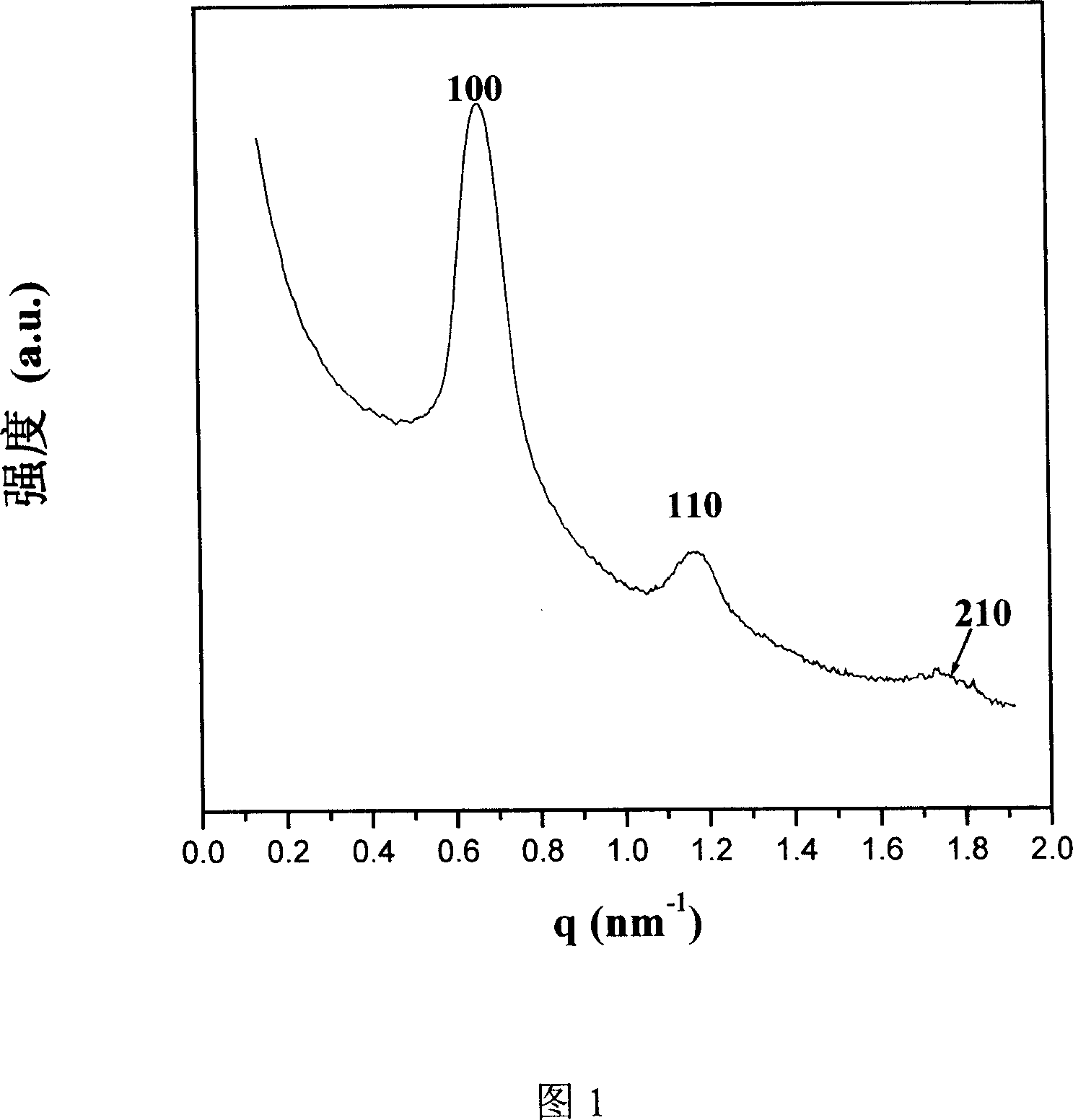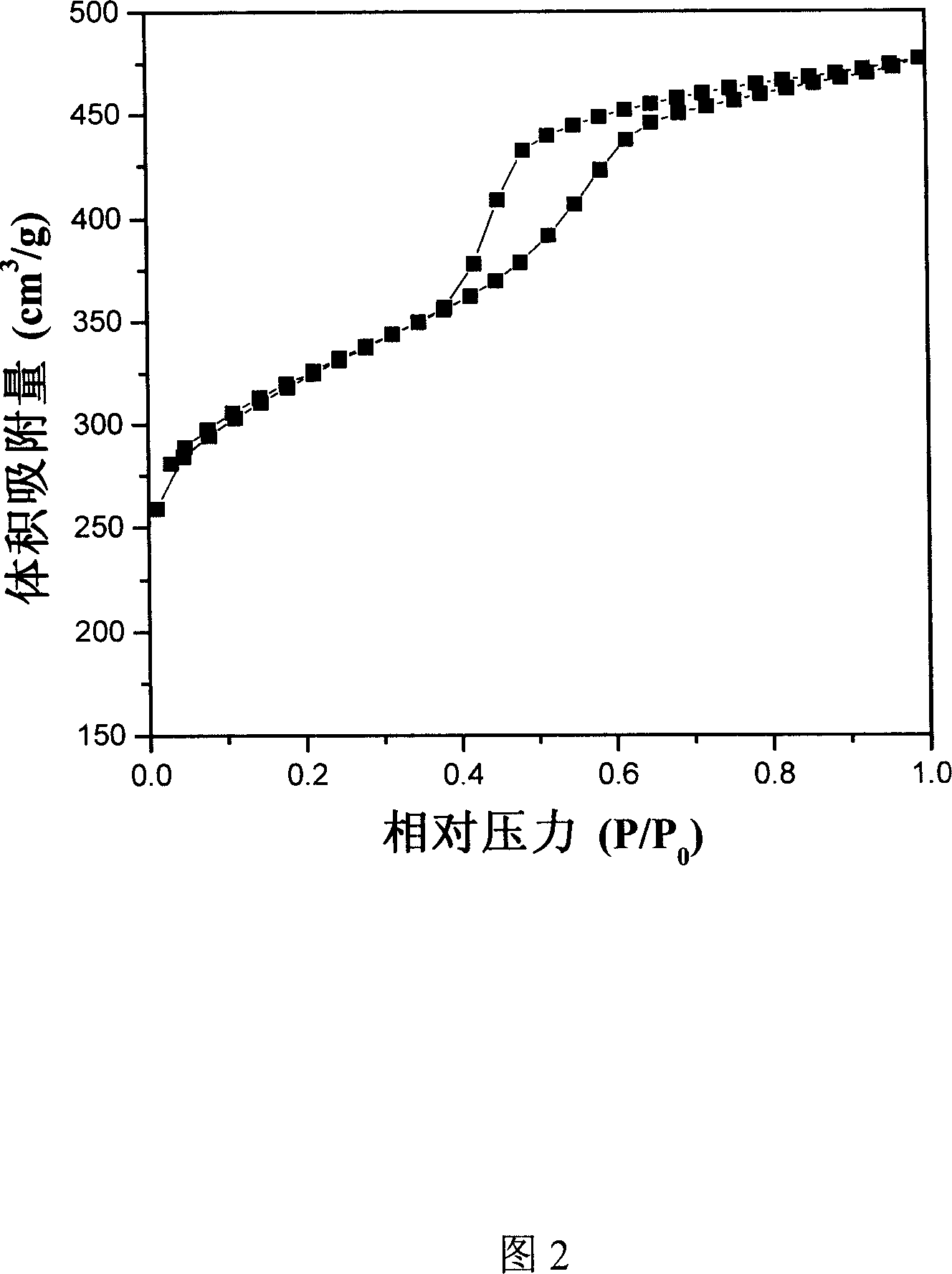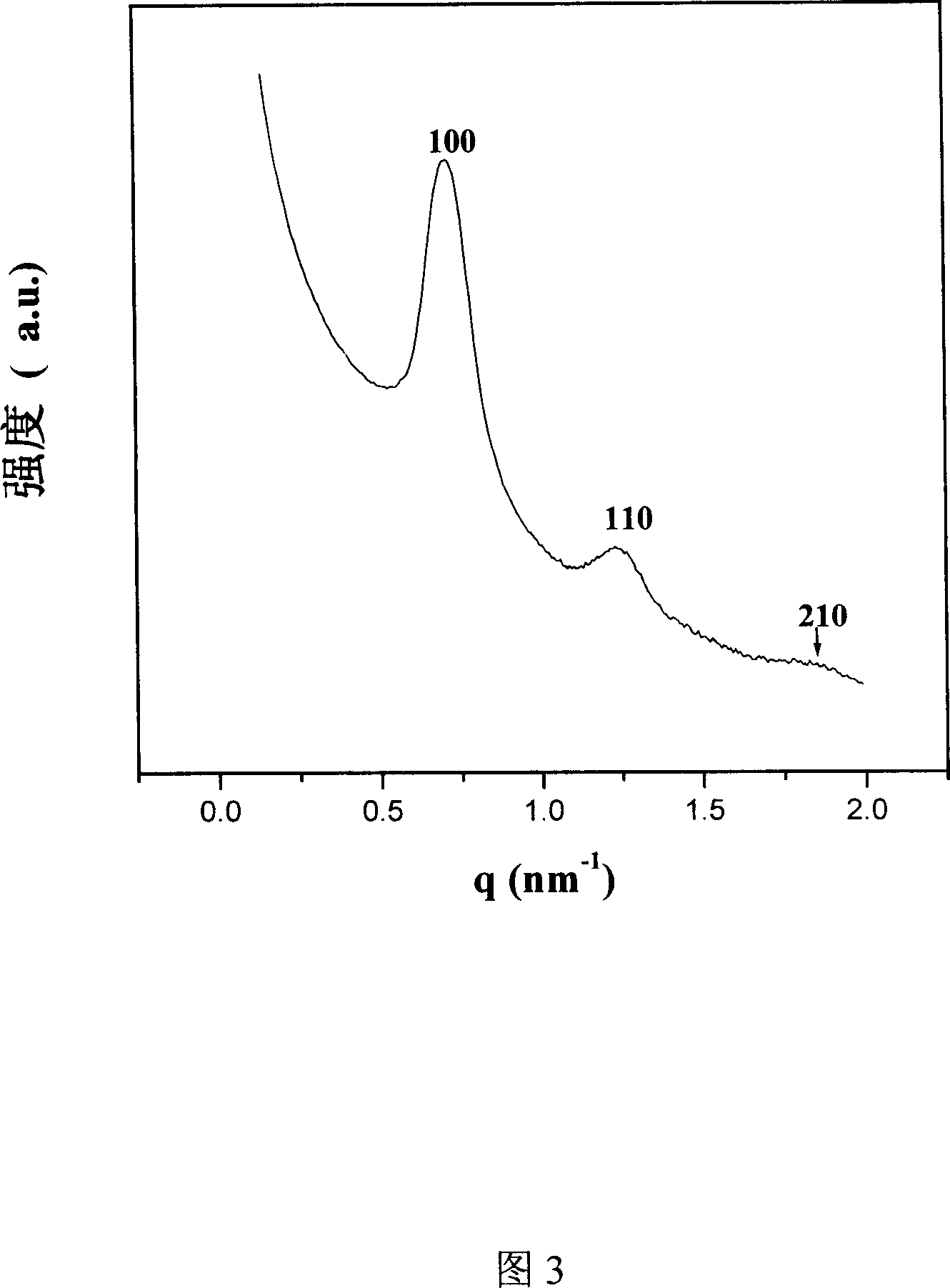New type fluorine functional ordered mesopore carbon material and its synthesis method
A functionalized, mesoporous carbon technology, applied in the field of materials, can solve problems such as functionalization difficulties, and achieve the effects of low price, wide application prospects, and fast electron transfer rate
- Summary
- Abstract
- Description
- Claims
- Application Information
AI Technical Summary
Problems solved by technology
Method used
Image
Examples
Embodiment 1
[0041] Preparation of phenolic resin precursor solution. Put 4g of phenol in a three-necked flask, heat it in a water bath at 42°C to make it a transparent liquid; prepare 1g of sodium hydroxide solution with a mass percentage of 20% (weigh 0.17g NaOH, add 0.78g distilled water), slowly drop into in this liquid. After 10 minutes, 7.08 g of formaldehyde solution with a mass percentage of 37% was added, refluxed at 70° C. for 1 hour, cooled to room temperature, and adjusted to neutral pH with 2 mol / L hydrochloric acid. Under reduced pressure distillation at 45°C-50°C, the residue obtained is the target product phenolic resin. The vacuum degree of vacuum distillation is 0.0974MPa. After cooling to room temperature, the ethanol or ether solutions of the phenolic resin prepolymer with a mass percent concentration of 20% and 50% were respectively prepared for use.
Embodiment 2
[0043] Preparation of fluorophenolic resin precursor solution. Put 3.6g of phenol and 0.477g of p-fluorophenol in a three-necked flask, and heat it in a water bath at 42°C to make it a transparent liquid; prepare 0.95g of a 20% sodium hydroxide solution by weight (weigh 0.17gNaOH, add 0.78g distilled water), slowly drop into the liquid. After 10 minutes, 7.08 g of formaldehyde solution with a mass percentage of 37% was added, refluxed at 70° C. for 1 hour, cooled to room temperature, and adjusted to neutral pH with 2 mol / L hydrochloric acid. Under reduced pressure distillation at 45°C-50°C, the residue obtained is the target product fluorine-containing phenolic resin. The vacuum degree of vacuum distillation is 0.0974MPa. After cooling to room temperature, the ethanol solution and the ether solution of the fluorine-containing phenolic resin prepolymer with a mass percent concentration of 20% and 50% were respectively prepared for use.
Embodiment 3
[0045] Preparation of fluorophenolic resin precursor solution. Put 2.0g of phenol and 2.385g of p-fluorophenol in a three-necked flask and heat it in a water bath at 42°C to make it a transparent liquid. Take 0.95g of sodium hydroxide with a mass percentage of 20% and slowly drop it into the liquid. After 10 minutes, 7.08 g of formaldehyde solution with a mass percentage of 37 wt.% was added, refluxed at 70° C. for 1 hour, cooled to room temperature, and adjusted to neutral pH with 2 mol / L hydrochloric acid. Under reduced pressure distillation at 45°C-50°C, the residue obtained is the target product fluorine-containing phenolic resin. The vacuum degree of vacuum distillation is 0.0974MPa. After cooling to room temperature, the ethanol or ether solutions of the fluorine-containing phenolic resin prepolymer with a mass percent concentration of 20% and 50% were respectively prepared for use.
PUM
| Property | Measurement | Unit |
|---|---|---|
| Aperture | aaaaa | aaaaa |
| Pore volume | aaaaa | aaaaa |
| Specific surface | aaaaa | aaaaa |
Abstract
Description
Claims
Application Information
 Login to View More
Login to View More - R&D
- Intellectual Property
- Life Sciences
- Materials
- Tech Scout
- Unparalleled Data Quality
- Higher Quality Content
- 60% Fewer Hallucinations
Browse by: Latest US Patents, China's latest patents, Technical Efficacy Thesaurus, Application Domain, Technology Topic, Popular Technical Reports.
© 2025 PatSnap. All rights reserved.Legal|Privacy policy|Modern Slavery Act Transparency Statement|Sitemap|About US| Contact US: help@patsnap.com



